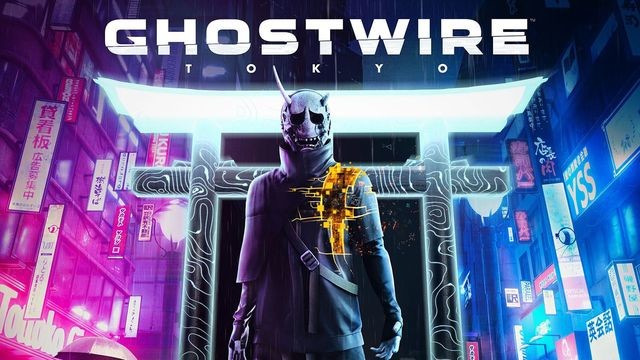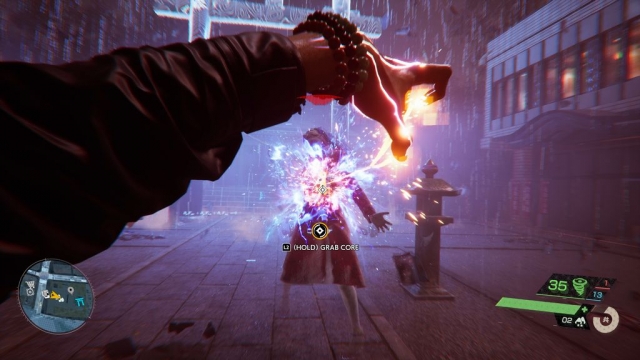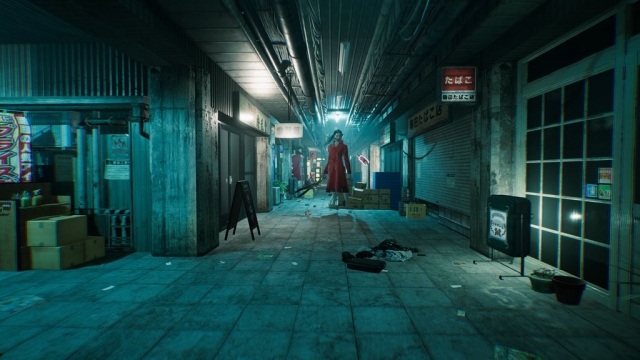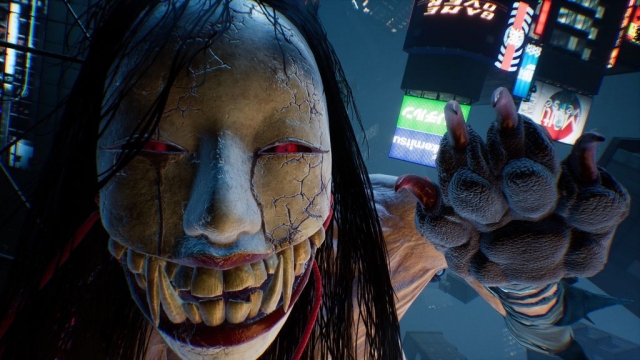Ghostwire: Tokyo

Ghostwire: Tokyo feels like it started its operational existence as a Japanese travelogue and got its supernatural and action elements bolted on later. Almost from the jump, it immerses you in disparate parts of Japanese culture, from history to mythology to urban legend to snack foods.
Also, you shoot headless schoolgirls with your finger lasers. That’s important too, I guess.
Ghostwire is an urban fantasy supernatural action game set in the Shibuya ward of Tokyo, which is overrun one night by a strange fog that seems to disintegrate everyone it touches. The lone survivor is Akito, a bike courier who got into a seemingly fatal crash moments before the incident, and he only lives due to the intercession of a spirit who calls himself “KK.”
With KK riding shotgun inside his head, Akito discovers that the attack on Shibuya was done by an unnamed guy in a Hannya mask and his four subordinates, who are capturing the spirits of Shibuya’s population for dark purposes.
Just to be a real dick on top of that, “Hannya” makes sure to specifically abduct Akito’s comatose sister Mari. That ends up putting KK and Akito on the same side, and together, they set out to free Shibuya’s people, save Mari, and kick Hannya square in the teeth while they’re at it.
From that description, you might think Ghostwire is a horror game, and it does have a lot of creative DNA from Tango Gameworks’ previous project, The Evil Within 2. Like TEW2, you’re isolated and outgunned against a big, open zone filled with monsters, where stealth and assassination are vital tools to help even the odds.
Unlike TEW2, Ghostwire is mostly playing in horror’s sandbox without quite going all the way into the genre. Its tone reminds me of Shin Megami Tensei, where it’s consistently creepy but not necessarily aiming to create fear or tension.
Here, you’re stuck in a haunting vision of Tokyo, ten seconds after the apocalypse. Everything still works, all the lights are still on, but the only moving things in the city are animals and monsters. Everywhere you look, you see what’s left of the humans who were touched by Hannya’s fog; they’ve simply vanished out from their clothes, leaving scattered shopping bags and unlocked phones in their wake.
The monsters, in turn, split the difference between urban folklore and Japanese myth. Some are the personified rage of repressed office workers, cops, or schoolchildren; others are new-jack legends courtesy of TV or the Internet. (There’s even one enemy, a murderous woman with garden shears, who’s a dead ringer for Lady Dimitrescu, but that’s *got* to be a coincidence of inspiration.)
Ghostwire paints a picture of a long-running, occult underground in Tokyo that’s suddenly and violently become real, and its worldbuilding is easily the best and most memorable part of the game. If fans don’t make this into a tabletop role-playing game by the end of Ghostwire’s launch weekend, they’re falling down on the job.
What keeps Ghostwire from being a horror game is that that you’re the scariest thing in the city. KK’s powers give Akito the ability to manipulate the elements as a weapon, and you eventually pick up a bow for stealth kills and a handful of traditional talismans to give you some extra edge.
Each of your elemental attacks can be charged up for extra effects, and reloading is a question of smashing various objects in your environment until candy comes out. You heal by eating whatever food you can buy, find, or steal, and Ghostwire’s good enough to throw plastic bags full of discarded takeout in your path at every opportunity. Resource scarcity is not a problem.
You’re generally only going to die in Ghostwire if you get backed into a corner and don’t have time to hit one of your half-dozen emergency buttons. If you’re looking for a challenge out of this game, start on Hard.
If you don’t, though, Ghostwire can still be absorbing. The combat’s a bit of a slog, and I found myself spending a lot of money and time that wasn’t strictly necessary in order to bypass fights by stealth, trickery, or sheer overkill.
It’s not exactly bad, but a lot of your go-to weapons in Ghostwire are either weak or scarce, so any situation where you end up in a stand-up brawl can be a little dull. Better to whip out your fire elemental attack, which is essentially the railgun from Quake II, and end every battle before it really starts.
I did get a lot of entertainment out of simply exploring the city, however. There are collectibles to find, outfits to unlock, filters and emotes to use in the game’s robust Photo Mode, and a general atmosphere of dread that kept me from ever feeling truly comfortable.
In fairness, there’s a lot about Ghostwire: Tokyo that was always going to hit me right in my particular weak spots. It’s an action game with horror trappings, a thoroughly evocative setting, and a likeable set of protagonists who never go over the line into either pointless conflict or treacly instant friendship.
In fact, the general deal with Akito and KK deserves some credit that I’m sure it’s not going to get. KK never softens up, but Akito rapidly overcomes his initial, understandable freakout to become a useful audience surrogate–he never quite knows what the hell is going on, and why would he?–and decent protagonist.
Most importantly, and this is key, you’re allowed to be genuinely heroic throughout the process. One of the biggest “collectibles” in Ghostwire is the ability to find and store the disembodied spirits of the people of Shibuya, then send them outside the city so Hannya can’t use them. You can casually save thousands of souls, if not lives, in Ghostwire, and it’s a nice twist on the general horror formula, like a Resident Evil game where you could opt to cure the zombies.
If I didn’t know better, I’d think Tango Gameworks made this game for me. If they had, though, the combat would feel a little better and the game would overall be a little more challenging.
This is basically an open-world first-person shooter that’s visibly inspired by and using a lot of the toys from survival horror, and it doesn’t quite manage that fusion with grace. However, Ghostwire is charming, interesting, and creepy enough that I’ve enjoyed my time with it.
Reviewed By: Thomas Wilde
Publisher: Bethesda Softworks
Rating: 85%
——————————————————————————–
This review is based on a digital copy of Ghostwire: Tokyo for the PlayStation 5 provided by Bethesda Softworks.
 Game Over Online
Game Over Online









